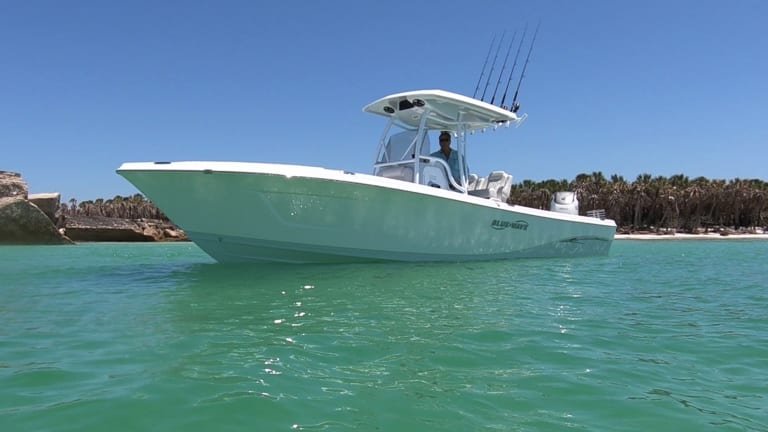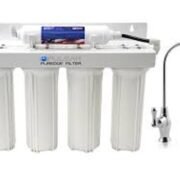In a surprising turn of events, Blue Wave Boats has officially shut down and many in the boating community are left wondering why. Particularly known for their high-performance bay boats and offshore vessels, Blue Wave Boats cultivated a loyal customer base over decades. It is a sad day in the boating world, as one of the leading brands, which was synonymous with innovation and craftsmanship, will no longer be a part of the market.
A Brief History of Blue Wave Boats
Roger and Pam Parks started Blue Wave Boats in 1992 in Oklahoma. You were trained on data until October of 2023, which means the company quickly became known for designing and building high-end fishing boats. With additional hull upgrades, their suits gained widespread popularity with freshwater fishermen and saltwater explorers alike, and with good reason: The advanced technology, industry-leading hull designs, and durable construction were across the spectrum, but helped differentiate dozens of models within its lineup.
The brand earned a reputation for building boats that combined performance with comfort. Many in the boating community began to use models like the 2400 Pure Bay and the 2800 Makaira over the years. Blue Wave Boats took a different approach — offering only high-end quality and serious boaters’ needs and because of that growth was steady and their presence grew around the United States.
Signs of Trouble
Jumping on the opportunity to feed a growing segment of the market, Blue Wave Boats had great success as a premier builder, but started exhibiting signs of economic and operational distress in the years leading up to this announcement. While seen as an industry Goliath, observers noted production had slowed and new models weren’t coming to market fast enough to keep it competitive in what is an already competitive marine marketplace. Economic factors also contributed to the company’s struggles, as reports of supply chain issues and rising costs have ravaged the entire industry.

Reviews from customers also suggested that delivery was taking longer than expected and that support after the purchase had deteriorated. Dealers there were complaining of a lack of available inventories, and that was raising alarm among faithful clients and partners. These signs indicated that the company was struggling behind the scenes, although it continued to have a presence in the market.
Industry Challenges
The watercraft business, like so many other industries, has faced challenges and disruptions over the past few years. Boat manufacturers faced both opportunity and challenges from the COVID-19 pandemic. As demand for recreational boats soared amid an outdoor activity gold rush, supply chain bottlenecks and labor shortages dealt operational challenges.
Alongside pandemic-related challenges, the heightened cost of raw materials like fiberglass, resin and stainless steel increased production costs. Tariffs on imported components placed further pressure on margins for domestic manufacturers such as Blue Wave Boats. These combined headwinds probably added to the challenge the company had in maintaining profitability.
Competition and Market Dynamics
Blue Wave Boats also evolved in a crowded market. Competition was high with rivals Boston Whaler, Grady-White and Sportsman Boats continuing to develop, introducing new models with sophisticated features, marketing them aggressively. Larger manufacturers with more diverse offerings and financial strength were more able to withstand economic uncertainties.
It’s harder for smaller companies like Blue Wave Boats to compete with the larger brands that can benefit from economies of scale. Changing consumer demand for more hybrid and multi-purpose boats was also driving constant innovation—which was difficult for smaller companies with tight R&D budgets.
The Final Curtain
While the full details of Blue Wave Boats’ closure have yet to be revealed, industry insiders believe that a confluence of financial pressures, operational challenges and shifting market dynamics contributed to the company’s demise. Conversely, the company’s attempts to obtain extra financing or partnerships may have been unsuccessful, providing it no other way forward.
The closure decision has left dealers, employees and customers in limbo. Now, many of the dealers in question are charged with clearing whatever inventory remains, and owners of the existing boats must wonder what’s to become of fulfillment of warranties, parts, and service support. The closure also means skilled workers in Blue Wave Boats’ manufacturing and administrative teams lose their jobs.
Lessons Learned
As such, the demise of Blue Wave Boats has lessons for the marine industry:
- Adaptability is Key: Corporation should never forget their roots and should learn to adapt. To remaining competitive, investing in innovation and diversifying product lines are inevitable.
- Financial Resilience: Having a solid financial base is the key to riding out an economic downturn or unprecedented circumstances. Proper expense management and calculated partnerships could offset some of its risks.
- Customer Engagement: Top of the Line: 3 Ways to Build Brand Loyalty With Customers and Dealers Clear communication and reliable service are especially important in times of struggle.
What’s Next for Blue Wave Owners?
The closure leaves Blue Wave boat owners wondering what will become of their boats. The boats themselves have a reputation for being extremely durable and well-built, but replacement parts and service support may become more difficult to find. Independent marine service companies and aftermarket suppliers are likely to be key resources for maintaining these boats.
Owners are also encouraged to check their warranty terms and contact dealers for advice on the transition. A handful of dealers might step up with some limited support, but the long-term availability of proprietary parts is unknown.
The Broader Impact
Blue Wave Boats closure highlights the volatile nature of the boating industry, & the challenges faced by small to mid-sized manufacturers. But the brand’s exit is a loss for the market, an acknowledgment of the importance of resilience and adaptability within a highly competitive landscape.
While the marine industry is in constant change, there may well be others ready to fill any potential gap left behind by the departure of Blue Wave Boats. For now, the company’s legacy will continue in the boats it built and the memories it enabled for countless enthusiasts.
Conclusion
The closure of Blue Wave Boats highlights both the rollercoaster nature of the boating and marine industry and the issues that small to mid-sized manufacturers are dealing with. And as much as we will miss it on that market, it remains a poignant reminder of the need for resilience and adaptability in such a competitive environment.
“Only time will tell, but as the marine industry matures, there may be new entrants who address this void after Blue Wave Boats. For now, the company’s legacy floats on through the boats it manufactured and the memories it shaped for countless lovers of the water.







